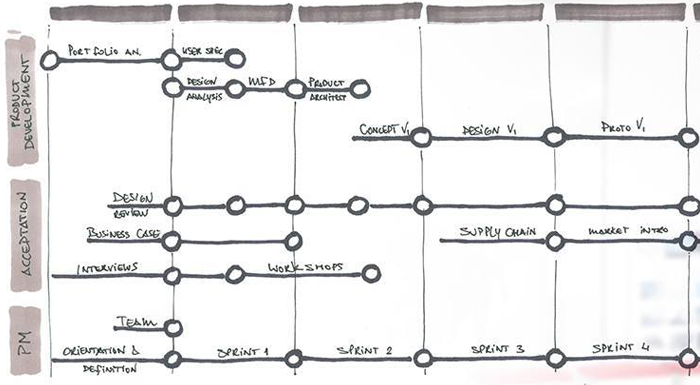
A project cannot succeed without a good project approach and accompanying SMART-formulated specifications. At Post & Dekker we often use the V model. In this blog we explain what the V model is.
What is the V-model?
The V-model is a structured project approach in which the attention is equally divided between project definition (and translation to technical design) and validation / verification of defined project requirements and needs.
From project definition to project test & validation
The V-model consists of the three major phases Project definition, Implementation and Project test & validation. There are several steps within these phases.
On the left, the V starts with Project definition. In this phase, the requirements are mapped at different levels: the user specifications, technical specifications and module specifications. After these are clearly listed, work is done on the technical design / geometric design.
At the bottom, in the middle, is the Implementation phase. In this phase, the design is worked out.
Finally, on the right side of the V there is the Project test & validation phase. Each step in this phase, on the right, tests a phase on the left. Here, among other things, the modules are tested and acceptance tests are carried out, as are the user tests and maintenance.
A pitfall when using the V model is that too much and / or not enough SMART (specific, measurable, acceptable, realistic, time-bound) is defined on the left. If that is the case, validation becomes difficult or even impossible. As a rule, anything defined on the left makes sense if it can be validated on the right.
Waterfall model
The V-model is an improved version of the Waterfall model. This model divides a development process into several phases, with development progressing smoothly to the end goal. Often this process consists of 6 phases, these are: definition & analysis, basic design, technical design / detail design, testing, integration and management and maintenance.
In the Waterfall model, the phases follow each other, the next phase only starts when the present phase has been completed. A big difference is that, for example, you do not start testing until everything has been completed, but you can always immediately test and validate at the different levels.
Structure and working method
Post & Dekker often uses the V-model for System development and Configure-to-Order projects. It offers us a good structure and ensures an efficient and effective working method. Do you want to know more about our working method? Then download the white paper "Creating new business for OEM".










